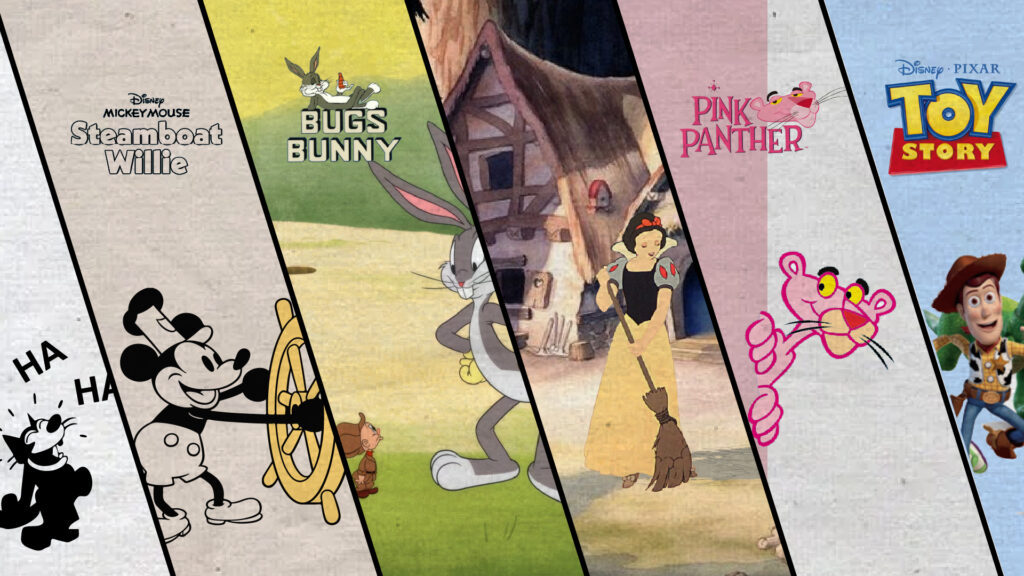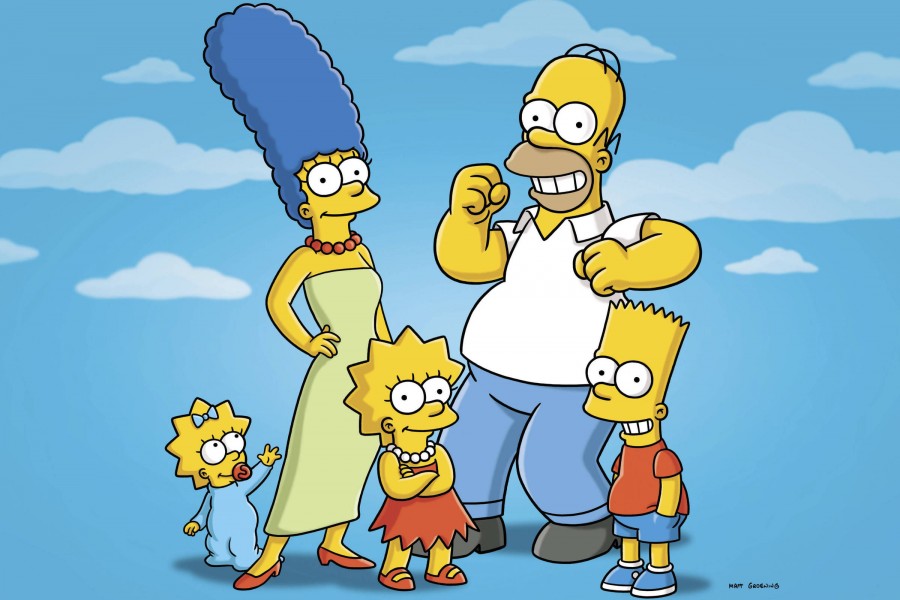Cartoons have been integral to our entertainment for decades, captivating audiences of all ages. This article delves into the fascinating evolution of cartoons, tracing their journey from classic creations to the modern masterpieces that dominate our screens today. From their humble beginnings to the technological advancements that have revolutionized the animation industry, we explore how cartoons have evolved, adapted, and enchanted generations. [ez-toc]
1. The Birth of Cartoons:
Cartoons emerged in the early 20th century as short, hand-drawn animations. Pioneering artists like Winsor McCay and Walt Disney laid the foundation for this art form, creating iconic characters such as Gertie the Dinosaur and Mickey Mouse. These early cartoons showcased the power of animation to bring imagination to life.

2. Technological Advancements:
With the advent of new technologies, cartoons underwent significant transformations. The introduction of synchronized sound brought soundtracks and voices to animated characters, enhancing storytelling possibilities. Later, the emergence of color animation added a vibrant dimension to the world of cartoons, captivating audiences with vivid visuals.
3. Golden Age of Animation:
The Golden Age of Animation, spanning the 1930s to the 1950s, witnessed the rise of beloved characters such as Bugs Bunny, Mickey Mouse, and Tom and Jerry. Studios like Disney, Warner Bros., and MGM produced many animated shorts and feature films that captured the hearts of audiences worldwide. This era showcased the artistry and creativity of animators, with hand-drawn frames meticulously crafted to bring characters to life.

4. Evolution of Animation Techniques:
The 1960s and beyond saw the emergence of new animation techniques, including stop-motion, claymation, and computer-generated imagery (CGI). Stop-motion films like “Wallace and Gromit” and “The Nightmare Before Christmas” introduced the medium’s tactile and charming element. CGI revolutionized animation, enabling the creation of realistic worlds and characters in films such as “Toy Story” and “Shrek.”

5. Expanded Narrative Possibilities:
As cartoons evolved, they began to explore more complex and mature narratives. Animated television shows like “The Simpsons” and “South Park” pushed boundaries with satirical humor and social commentary, appealing to children and adults. This expansion of storytelling possibilities allowed cartoons to tackle various themes and engage diverse audiences.

6. Anime and Global Influence:
The rise of anime from Japan brought a unique aesthetic and storytelling style to the world of animation. Anime series like “Dragon Ball,” “Pokémon,” and “Studio Ghibli” films gained immense popularity and influenced animation globally. This cultural exchange has contributed to the diverse landscape of cartoons, expanding the horizons of storytelling and captivating audiences worldwide.

Conclusion:
The evolution of cartoons from classic to modern masterpieces is a testament to the limitless possibilities of animation as an art form. Cartoons have pushed the boundaries of creativity, storytelling, and technological innovation, from hand-drawn frames to advanced computer-generated imagery. As the animation continues to evolve, we eagerly anticipate the next chapter in the captivating history of cartoons, where imagination knows no bounds and storytelling transcends all expectations.
FAQ
Q1: How did cartoons evolve from their early beginnings to the modern era?
A: Cartoons have evolved tremendously over time. They started as hand-drawn animations and have advanced through technological innovations such as synchronized sound, color animation, and the introduction of new techniques like CGI and stop-motion.
Q2: Who were some of the key pioneers in the early days of cartoons?
A: Pioneers like Winsor McCay and Walt Disney played crucial roles in the early development of cartoons. McCay created the iconic character Gertie the Dinosaur, while Disney brought Mickey Mouse to life, forever changing the animation landscape.
Q3: What is the Golden Age of Animation?
A: The Golden Age of Animation referred to the period from the 1930s to the 1950s when animation flourished, and beloved characters like Bugs Bunny, Mickey Mouse, and Tom and Jerry were introduced. This era showcased the artistry and creativity of animators, producing memorable cartoons that are still cherished today.
Q4: How have technological advancements influenced the evolution of cartoons?
A: Technological advancements have had a profound impact on cartoons. The introduction of synchronized sound allowed for soundtracks and character voices, while color animation added visual richness. Later, the adoption of CGI revolutionized animation, enabling realistic and visually stunning creations.
Q5: How have cartoons expanded their storytelling possibilities over time?
A: Cartoons have evolved from simple comedic shorts to more complex narratives. Shows like “The Simpsons” and “South Park” pushed boundaries with social commentary and satirical humor, appealing to many audiences. This expansion has allowed for diverse themes and engaging storytelling.
Q6: What is the influence of anime on the evolution of cartoons?
A: Anime, originating from Japan, has significantly impacted the global animation landscape. Anime series and films, such as “Dragon Ball,” “Pokémon,” and those from Studio Ghibli, have gained immense popularity and introduced unique storytelling styles and aesthetics to cartoons worldwide.
Q7: How have modern cartoons appealed to both children and adults?
A: Modern cartoons often incorporate humor and themes that resonate with audiences of all ages. They strike a balance between entertaining children with colorful visuals and engaging storytelling while also including subtle references and humor that adults can appreciate.
Q8: How has the evolution of cartoons influenced the global animation industry?
A: The evolution of cartoons has expanded the global animation industry, allowing for cross-cultural influences and a diverse range of animated content. Different animation styles and storytelling approaches from various countries have contributed to a more prosperous and globalized landscape of cartoons.
Q9: What can we expect for the future of cartoons and animation?
A: The future of cartoons holds endless possibilities. With ongoing technological advancements and growing demand for animated content, we can anticipate more visually stunning and narratively ambitious creations. The boundaries of imagination and storytelling will continue to be pushed in the years to come.
Q10: Where can I find classic and modern cartoons to enjoy?
A: Classic cartoons can be found on platforms that offer vintage animation collections, streaming services, or DVD releases. Modern cartoons are widely available on television networks, streaming platforms, and online video platforms, catering to various preferences and interests.
Citations:
- Barrier, M. (2003). Hollywood cartoons: American animation in its golden age. Oxford University Press.
- Crafton, D. (2013). Before Mickey: The animated film, 1898-1928. University of Chicago Press.
- Mallory, M. (2011). Drawing from tradition: Neo-traditional animation and the aesthetics of nostalgia. Animation: An Interdisciplinary Journal, 6(2), 155-172.
- Wells, P. (2002). Animation and America. Rutgers University Press.
- Solomon, C. (2014). The 100 greatest Looney Tunes cartoons. Rowman & Littlefield.
- Pilling, J. (1997). A reader in animation studies. John Libbey Publishing.
- Beck, J., & Friedwald, W. (2016). The 50 greatest cartoons: As selected by 1,000 animation professionals. Turner Classic Movies.
- Lenburg, J. (2006). The Encyclopedia of animated cartoons. Checkmark Books.









4 Comments